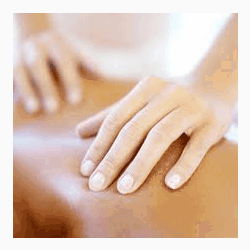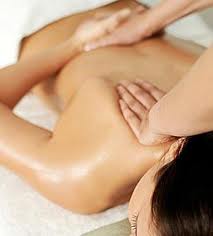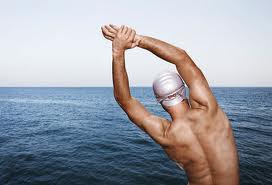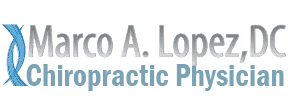Patient Services
"I don't believe there is 'one-size-fits-all' solution...I like to take my time to understand the source of a patients pain before determining the best course of actionCommon Complaints
Common complaints that respond to conservative treatment (non-invansive, non-surgical, non-medicated.) Chiropractic care incorporates (1) manipulation to restore proper joint motion, (2) manual therapy to achieve pain-free soft tissue function, and (3) focused exercises to rehabilitate key supportive muscles that can prevent future injury.- Arm or Leg Pain
- Bursitis
- Carpal Tunnel Syndrome
- Disc Derangement
- Dizziness
- Entrapment Neuropathy
- Golfers Elbow
- Headaches
- Herniated Discs
- Joint Dysfunction
- Joint Sprains and Stiffness
- Low Grade Ligamentous Tears
- Muscle Strains and Soreness
- Nagging Back Pain
- Non-Cardiac Related Chest Pain
- Pregnancy Related Back Pain
- Radiculopathy
- Repetitive Stress Injuries
- Rotator Cuff Injuries
- Spinal Stenosis
- Tendonosis
- Tennis Elbow
- Vertigo
- Youth Sport Injuries
Are you in Pain? I can Help!
Let’s chat to see how I can help you ease your pain…
Also known as the chiropractic adjustment. Joints can become locked and painful. They can also refer pain that feels like a pinched nerve. They can (inhibit) “turn off” muscles which lead to a sense of weakness or they can (facilitate) “turn on” muscles that feel like knots or spasms that interfere with movement. Joint manipulation of the spine restores intervertebral motion and improves the interplay between your joints and muscles. Chiropractors spend three years learning anatomy and body mechanics to understand how and where to apply movement to keep patients safe and reduce joint related symptoms. Do not allow untrained people to manipulate your spine.
Typical chiropractic spinal manipulation that introduces a small quick movement into the joint to improve proper joint mechanics. Chiropractors refer to spinal manipulation as an “adjustment.” Often times an audible noise “crack” is heard. This sound corresponds to the release of gases within the joint.
 High Velocity Low Amplitude (HVLA) Manipulation
High Velocity Low Amplitude (HVLA) Manipulation
Typical chiropractic spinal manipulation that introduces a small quick movement into the joint to improve proper joint mechanics. Chiropractors refer to spinal manipulation as an “adjustment.” Often times an audible noise “crack” is heard. This sound corresponds to the release of gases within the joint.Low Velocity Low Amplitude (LVLA) Manipulation
Gentler form of manipulation that utilizes coordinated breathing and muscle contraction with coordinated pressure to improve proper joint mechanics. Audible “cracks” are not typically heard with this type of manipulation.Distraction Manipulation
Gently opens joint spaces within the spine while increasing movement of fluids and nutrients into the interverterbral disc to help promote healing, improve function and decrease pain. This is different than traction because traction is static; there is no additional motion aside from the stretching sensation. This is also different than inversion tables. Inversion tables are also static but they use the bodies weight to stretch the back. This offers no control or feedback. Its like having a radio with a pre-set max volume that cannot be turned down. Spinal decompression on the other hand uses the same concept of distraction with more weight or pressure in a controlled setting. Unfortunately, spinal decompression is usually not covered under insurance.Manipulation Under Anesthesia (MUA)
MUA offers a final non-surgical approach for people suffering from neuromusculoskeletal pain. It releases painful fibrotic adhesions in joints, muscles, and nerves. This multidisciplinary approach employs board certified anesthesiologists for medical management to ensure patient safety. MUA sets the stage for people to benefit from rehabilitative programs with an improved prognosis. MUA is best suited for patients with intense chronic pain unresponsive to conservative or therapeutic treatment.Soft tissue refers to muscles, nerves, ligaments and tendons. They range from soft to tough but remain pliable to allow for stability and motion. We are mobile creatures designed to stay active. Lack of activity, repetitive injury, sustained movements or scarring can lead to stiffness, over activation of the wrong muscles and various symptoms related to soft tissue. In fact, soft tissue can refer symptoms that mimic headaches or pinched nerves. Soft tissue treatment uses a variety techniques to improve pain-free motion.  irritation.
irritation.
Neural Mobilization
Nerve fibers, like muscle fibers, are composed of soft elastic tissue. By gently stretching painful nerves, micro scarring is released and nerves adapt to their environment and so reduce pain associated with nerve irritation.
irritation.Myofascial Release
Scars develop everywhere in the in the body, even inside. When scars develop in a haphazard fashion that interferes with normal motion they can cause pain. Myofascial release treats painful adhesions in muscle, tendon, and ligament fibers (soft tissue) as well as overlying fascia to facilitate pain-free motion.Post Isometric Relaxation
Some muscles become facilitated “turned on” due to (1) direct injury, (2) to compensate for injury elsewhere or (3) when we engage in faulty movement patterns that perpetuate injury. This strategy for stubborn muscles combines stretching with sustained muscular contraction to increase relaxation and pain-free motion.Active Release Technique
Combines petrissage with specific muscle movement to relieve painful muscles, release trigger points and break up painful adhesions.Muscle Activation
Some muscles become inhibited “turned off” due to (1) direct injury, (2) to compensate for injury elsewhere or (3) when we engage in faulty movement patterns that perpetuate injury. This strategy “awakens” muscles so they can do there job and you move without discomfort. Active exercise or active care means the patient participates is his treatment as opposed to being an uninvolved recipient called passive care. For example, a therapist stretches you versus you stretching for your self. Research tells us that patients involved in their treatment will (1) have better short term and long term response to care, (2) quicker recovery times and (3) decreased pain. The next question that comes to mind is, “why see someone for something I can do myself?” The answer is guidance. Its like working out alone versus using a personal trainer. A good doctor will know when to push more or scale back. Furthermore, a good doctor will not foster dependence on his service. On the contrary, he should try to help you–empower you–to manage small flares up on your own. He will always be available to provide care when you need help. Stretching exercises This is pretty straight forward. Most people now basic stretches. These are important because flexibility prevents injury. That’s why baby’s don’t often break bones or pull muscles, why drunk drivers rarely get injured or why coaches stress their players about warming up. Sometimes, your body needs extra help relaxing tense (facilitated) muscles. Fortunately, there are a variety of strategies for accomplishing this goal and targeting specific muscles with unique stretches. Stabilization exercises Strengthen key muscles that protect the spine during activity. If you think of the spine as those building blocks we played with as children you can imagine that stacking blocks on top of one another does not provide the most stable structure. Muscles play a key role in holding those “blocks” steady while we work and play like guide wires on a tent or mast. Your vertebra–back bones–have about seven small stabilizing muscles on each side. If these do not work properly, then your spine will be unsteady. This muscular instability can cause back pain and related symptoms. Sensorimotor training Re-establishes a healthy and appropriate muscle response by stimulating sensory input and reinforcing important neural pathways that keep us moving injury free even when we are not paying attention. These type of exercises ensure an adequate and appropriate response to external, physical stress. One way to think of this is to imagine someone throwing something at you and you see it, but don’t move. There is disconnect between what you see (sensory input) and what you do (motor response). Another example. If you stumble and your muscles do not engage at the right time to protect your spine you may experience an injury.
Active exercise or active care means the patient participates is his treatment as opposed to being an uninvolved recipient called passive care. For example, a therapist stretches you versus you stretching for your self. Research tells us that patients involved in their treatment will (1) have better short term and long term response to care, (2) quicker recovery times and (3) decreased pain. The next question that comes to mind is, “why see someone for something I can do myself?” The answer is guidance. Its like working out alone versus using a personal trainer. A good doctor will know when to push more or scale back. Furthermore, a good doctor will not foster dependence on his service. On the contrary, he should try to help you–empower you–to manage small flares up on your own. He will always be available to provide care when you need help. Stretching exercises This is pretty straight forward. Most people now basic stretches. These are important because flexibility prevents injury. That’s why baby’s don’t often break bones or pull muscles, why drunk drivers rarely get injured or why coaches stress their players about warming up. Sometimes, your body needs extra help relaxing tense (facilitated) muscles. Fortunately, there are a variety of strategies for accomplishing this goal and targeting specific muscles with unique stretches. Stabilization exercises Strengthen key muscles that protect the spine during activity. If you think of the spine as those building blocks we played with as children you can imagine that stacking blocks on top of one another does not provide the most stable structure. Muscles play a key role in holding those “blocks” steady while we work and play like guide wires on a tent or mast. Your vertebra–back bones–have about seven small stabilizing muscles on each side. If these do not work properly, then your spine will be unsteady. This muscular instability can cause back pain and related symptoms. Sensorimotor training Re-establishes a healthy and appropriate muscle response by stimulating sensory input and reinforcing important neural pathways that keep us moving injury free even when we are not paying attention. These type of exercises ensure an adequate and appropriate response to external, physical stress. One way to think of this is to imagine someone throwing something at you and you see it, but don’t move. There is disconnect between what you see (sensory input) and what you do (motor response). Another example. If you stumble and your muscles do not engage at the right time to protect your spine you may experience an injury.Doctors use several tests to evaluate neurological function and help diagnose neurological conditions. The most frequently used are Nerve Conduction Studies(NCS) and ElectroMyoGraphy (EMG). NCS and nEMG tests are done in order to evaluate the condition of nerves and muscles. NCS utilizes mild electrical stimulation applied to the extremities. nEMG uses a very thin needle—similar to acupuncture– inserted into specific muscles to observe and listen to its reaction. An electrodiagnostic evaluation employs highly sophisticated equipment to calculate the functionality of major nerves in the extremities; it assesses whether muscles have had interruption in their nerve supply, or whether muscle damage exists. Clinical evaluation is irreplaceable. However, these tests give doctors specific details regarding the stage of disease by providing quantitative and qualitative information about peripheral myelin, axons and muscles. This information enables the doctor to provide the best therapeutic options to the patient. Electrodiagnostic evaluation is best suited for those patients with persistent complaints of skin disturbances, muscle weakness or cramping, radiating pain or limb pain, or spinal pain that have had minimal to no response with conservative treatment. For more information, visit www.teleEMG.com
 My treatment strategies aim to relieve and control pain. However, treatment alone cannot undo bad habits that contribute to patient complaints. These bad habits can perpetuate symptoms and provide a continual source of stress. For example, the way we sit, the way we play, the way we eat and whether we smoke can contribute the long list common complaints affecting your daily life. I strive to empower the patient with tools to adapt their workplace and lifestyle habits. This will help them cope with their day-to-day symptoms so they do not feel powerless when faced with a flare up or exacerbation. Doctors should empower people to help themselves and not depend on medical intervention whether it be alternative or traditional.
My treatment strategies aim to relieve and control pain. However, treatment alone cannot undo bad habits that contribute to patient complaints. These bad habits can perpetuate symptoms and provide a continual source of stress. For example, the way we sit, the way we play, the way we eat and whether we smoke can contribute the long list common complaints affecting your daily life. I strive to empower the patient with tools to adapt their workplace and lifestyle habits. This will help them cope with their day-to-day symptoms so they do not feel powerless when faced with a flare up or exacerbation. Doctors should empower people to help themselves and not depend on medical intervention whether it be alternative or traditional.